25.04.2021
A Soyuz rocket is standing on a launch pad at the Vostochny Cosmodrome in Russia’s Far East for liftoff Sunday with the next 36 satellites for OneWeb’s internet network, the sixth Soyuz mission dedicated to the commercial broadband constellation.
The 36 satellites, built on Florida’s Space Coast by a joint venturer between between OneWeb and Airbus, are stowed inside the nose cone of a Soyuz-2.1b rocket at Vostochny, Russia’s newest spaceport in the far eastern Amur Oblast near the Chinese border.
Ground teams transferred the Soyuz rocket, its Fregat upper stage, and the OneWeb payload compartment to their launch pad Thursday. A hydraulic lift raised the Soyuz rocket vertical over the flame trench, and a mobile gantry moved into position around the launcher for workers to complete final launch preparations.
Russian managers will meet around five hours before launch to give the “go” to load kerosene and liquid oxygen propellants into the Soyuz rocket. The gantry will withdraw to a location near the launch pad, clearing the way for liftoff at 2214:08 GMT (6:14:08 p.m. EDT).
Launch is timed for 7:14:08 a.m. Monday local time at Vostochny, around two hours after sunrise.
The four-hour mission will place the 36 OneWeb satellites — each about the size of a mini-fridge — into a polar orbit about 279 miles (450 kilometers) above Earth after launching toward the north from Vostochny. Each spacecraft will deploy power-generating solar panels and switch on xenon-fueled plasma thrusters to reach an operational altitude of 745 miles (1,200 kilometers) in the coming months.
With next 36 satellites, OneWeb’s fleet will have 182 spacecraft of a planned constellsation of 648 nodes relaying broadband internet signals around the world. The fleet will surpass the one-quarter complete mark with Sunday’s launch.
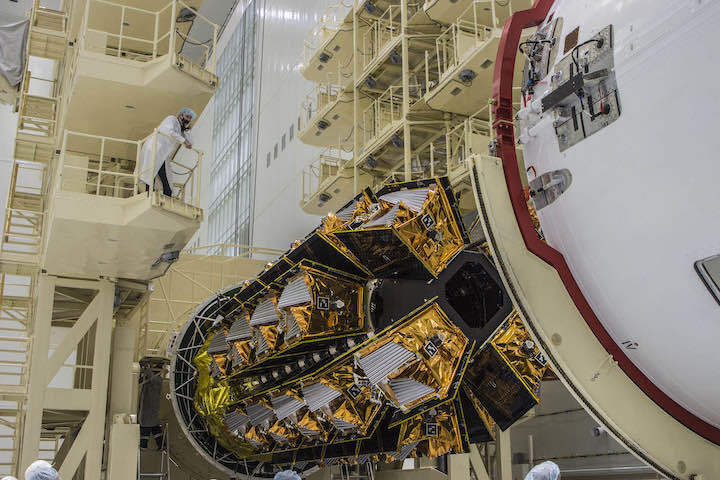
London-based OneWeb said the launch Sunday is the third of a set of five Soyuz missions that will enable the network to provide initial connectivity to users north of 50 degrees latitude. The five launches began in December — after OneWeb emerged from bankruptcy proceedings last year — followed by another Soyuz flight March 25. The next two OneWeb launches after Sunday are tentatively scheduled for May 27 and July 1 from Vostochny, according to Russian media reports.
“OneWeb’s ‘Five to 50’ programme aims to connect broadband data users in the northern hemisphere, with services covering the United Kingdom, Alaska, Northern Europe, Greenland, Iceland, the Arctic Seas and Canada,” OneWeb said in a statement. “Service will be ready to start by the end of year, with global service available in 2022.”
Four Soyuz launches for OneWeb are scheduled from the Baikonur Cosmodrome in Kazakhstan later this year, each carrying more than 30 satellites.
The rapid-fire launch schedule follows the first three Soyuz/OneWeb launches in February 2019, February 2020, and March 2020.
OneWeb filed for bankruptcy last year after running into fundraising trouble. The UK government and the Indian mobile telecom operator Bharti Global purchased OneWeb, which is headquartered in London and has satellite operations centers in Britain and Virginia.
The launch Sunday will be the sixth of 19 dedicated Soyuz missions to build out OneWeb’s fleet.

OneWeb bought the Soyuz launches from Arianespace, which oversees Soyuz flights from the Guiana Space Center in South America. Through its subsidiary Starsem, Arianespace also manages commercial Soyuz launch services from the Baikonur Cosmodrome in Kazakhstan, and from Vostochny.
The busy string of launches planned by OneWeb is outpaced by only SpaceX, which is deploying a network of thousands of Starlink satellites to provide global internet services. Other companies, such as Amazon and Telesat, are developing their own satellite internet constellations, but neither has started deploying operational spacecraft. So far, SpaceX is closest to entering commercial service, followed by OneWeb.
The commercial ventures are designed to beam internet signals to underserved communities, commercial and military ships and aircraft, and other remote customers.
SpaceX’s early focus has been on the consumer broadband market, but the U.S. military has tested out Starlink services. OneWeb’s has emphasized selling services to governments and companies, and the company said it recently also demonstrated its internet connectivity to the U.S. military.
Using its own fleet of reusable Falcon 9 boosters, SpaceX has jumped far ahead of OneWeb in launching satellites. SpaceX has put up 1,445 Starlink satellites to date, including prototypes and failed spacecraft. The company says it has more than 1,300 active satellites in its constellation.
The design of SpaceX’s Starlink network, which flies closer to Earth, requires more satellites to provide global service than OneWeb’s fleet. SpaceX says placing its satellites at lower altitudes reduces the risk of the spacecraft becoming a long-term source of space junk.

On Sunday’s launch, the Soyuz-1.b rocket will shed its four kerosene-fueled first stage boosters about two minutes after liftoff, then the payload shroud will jettison at T+plus 3 minutes, 35 seconds, after vehicle climbs above the thick, lower layers of the atmosphere. The Soyuz core stage will fire until just shy of the five-minute mark in the mission, then separate to fall back to the ground over Russian territory.
A third stage engine will light to propel the Fregat upper stage and stack of OneWeb satellites on a ballistic, suborbital trajectory. Then the Fregat main engine will ignite at T+plus 10 minutes, 22 seconds, for a five-minute burn to place the OneWeb satellites into a preliminary elongated orbit.
After soaring north over the Arctic Ocean and back south again, a second burn by the Fregat upper stage about 64 minutes after liftoff to finish the job of placing the OneWeb payloads into the proper 279-mile-high orbit for deployment.
The Fregat upper stage will release the OneWeb satellites into orbit four at a time, with pulses by the Fregat’s smaller control thrusters between each deployment to provide spacing between the spacecraft.
The first quartet of OneWeb satellites will separate at 7:32 p.m. EST (2332 GMT), and the final four will fly free of the Fregat upper stage at about 10:05 p.m. EDT (0205 GMT), nearly four hours after liftoff.
Quelle: SN
----
Update: 26.04.2021
.
OneWeb Confirms Successful Launch #6 As It Moves Closer to ‘Five to 50’ Ambition
- OneWeb confirms successful launch and contact with all 36 satellites, bringing total in-orbit constellation to 182 satellites
- On schedule to cover 50 degrees latitude and above by June, with service ready to start by the end of the year
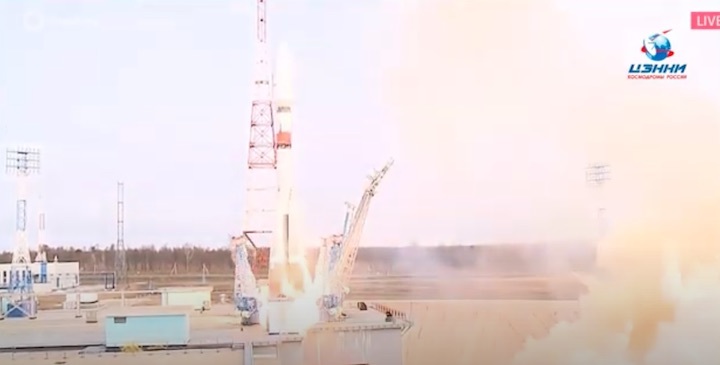
London, UK, 26 April 2021: OneWeb, the Low Earth Orbit (LEO) satellite communications company, has confirmed the successful launch of all 36 satellites by Arianespace from the Vostochny Cosmodrome. This launch brings OneWeb a step closer to its ‘Five to 50’ ambition, which enables the start of commercial service by the end of the year.
Lift-off occurred on 25 April at 23:14 BST. OneWeb’s satellites separated from the rocket and were dispensed in nine batches over a period of 3 hours 52 minutes with signal acquisition on all 36 satellites confirmed.
This successful launch brings its total in-orbit constellation to 182 satellites. These will form part of OneWeb’s 648 LEO satellite fleet that will deliver high-speed, low-latency global connectivity, and represents 60 percent of the constellation required to enable its connectivity solution to reach all regions north of 50 degrees latitude by June 2021.
This is the third in a five-launch ‘Five to 50’ programme, enabling OneWeb to offer services across the United Kingdom, Alaska, Northern Europe, Greenland, Iceland, the Artic Seas and Canada, and will be switched on before the end of the year. OneWeb then intends to make global service available in 2022.
Neil Masterson, OneWeb CEO commented: “These are exciting times at OneWeb as we get ever closer to bringing our connectivity services to some of the world’s hardest to reach places. With this third successful launch in our ‘Five to 50’ programme, we are rapidly building momentum: we are launching more satellites, demonstrating the network, and announcing more distribution signings around the globe. We have a world class team and product, and alongside our supportive shareholders, OneWeb continues to work towards bringing connectivity to everyone, everywhere.”

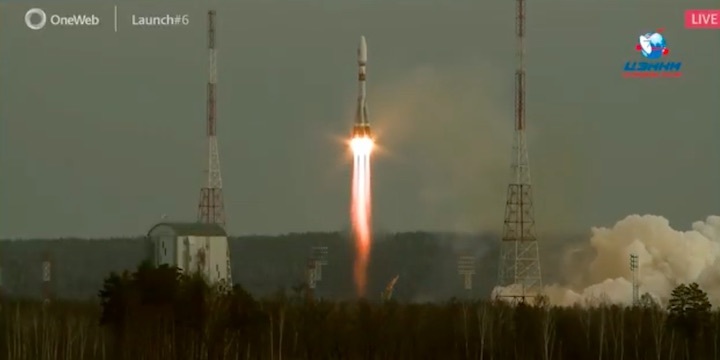
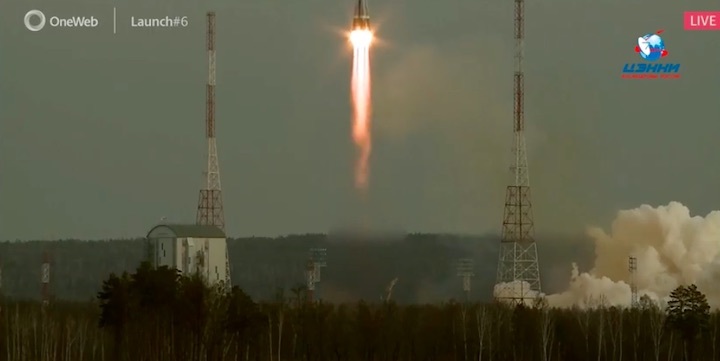
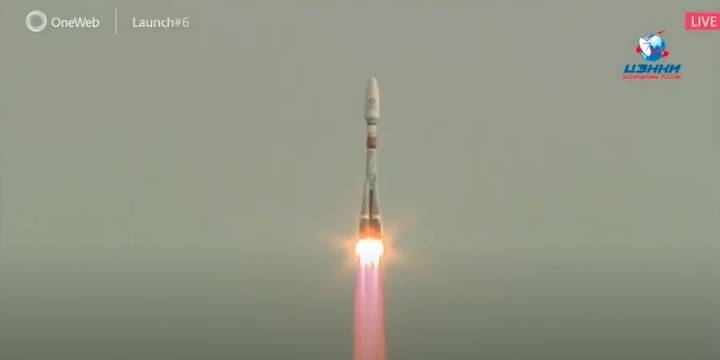
Quelle: OneWeb
